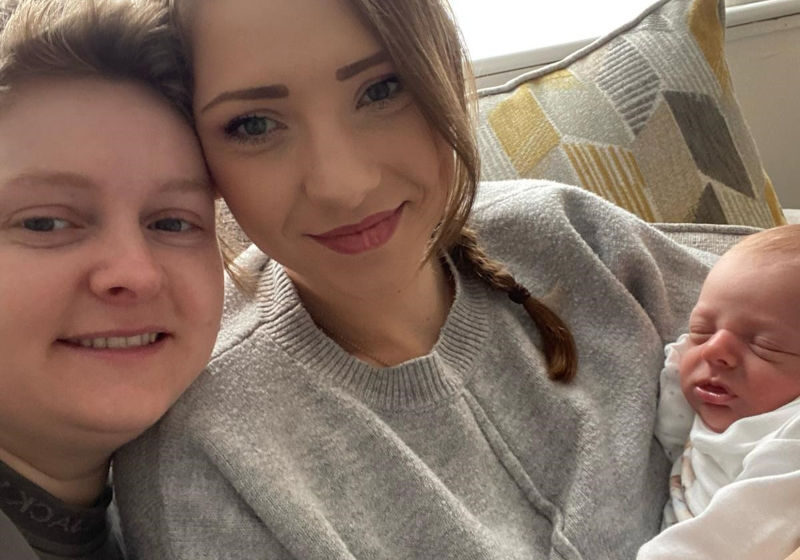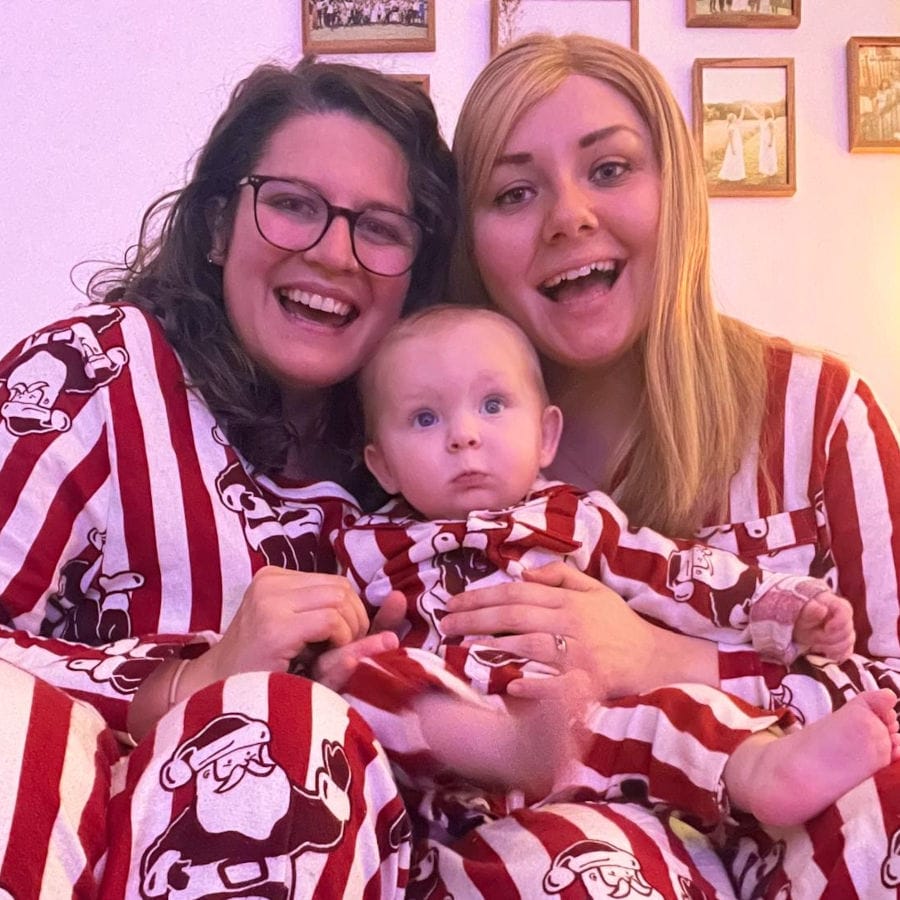Shared motherhood IVF, a wonderful way to start a family
16 Jul 2024
What happens when you want to share the whole fertility journey? Mica and Laura decided ‘shared motherhood IVF’ offered a unique way for them both to feel fully involved and together they are celebrating their daughter’s first birthday.
We both wanted to be involved
“We liked the idea of shared motherhood because it meant we could both be closely involved, but we kept changing our minds about whose eggs we would use and who would carry,” says Mica, aged 33. “In the end we decided to use Laura’s eggs and for me to carry. You don’t know if it’s going to work or if you only have one shot, and we wanted to both be involved.”
Laura (now 37) had considered going solo with IVF before she met Mica. Of their shared treatment she says: “Shared motherhood process involves one of you ‘donating’ your eggs to your partner. The consultant at Bourn Hall explained to us that egg donors don’t usually donate after 35, so, as I was 34 and Mica was younger, we made the decision to use my eggs first.
“We had both always wanted children but obviously knew, being a same-sex couple, that we would need some kind of ‘intervention’. I already knew someone who had been to Bourn Hall and I had heard good things about the clinic.”
Shared motherhood IVF with donor sperm
For shared motherhood IVF one partner has ovulation stimulation to produce many eggs at the same time. These are fertilised with donor sperm and one of the resulting embryos is transferred to her partner’s womb to carry the pregnancy. The remaining embryos are frozen for potential further treatment.
Bourn Hall has its own sperm bank, patients also have the option of sourcing their donor from an external sperm bank to give them a wider selection of characteristics. Mica and Laura chose Cryos, a sperm bank in Denmark.
“It was a bit daunting at first to consider going elsewhere for a donor,” says Laura. “But it was very easy. We chose the donor and paid for the sperm, and it was sent straight to Bourn Hall.”
Once the couple had undergone tests, they took medication to synchronise their cycles, so that Mica’s womb would be ready to accept an embryo.
“They put Mica’s ovaries to sleep and mine into hyperdrive,” laughs Laura.

Devastated – but determined to try again
Bourn Hall retrieved 12 eggs from Laura and six embryos were created. Their fresh embryo transfer didn’t result in a pregnancy.
“When the first embryo transfer didn’t work it was devastating,” says Mica. “It was post-Covid and we had to isolate so we needed to explain to people why, which meant quite a few people knew and asked us about it.
“The second time we only told close family, which was nicer; it kept it all calmer, and we knew people wouldn’t be asking if it had worked or not.”
The couple were delighted when they found out that Mica was pregnant after their Frozen Embryo Transfer – and nine months later, in June 2023, their daughter Addison was born.
“Becoming parents through IVF is just a miracle for us,” says Mica. “Because there would be no way of us having a baby without it. It has given us a chance to have our own family.
Good option
Shared motherhood IVF is a good option if both partners want to share the experience.
“At times we both found the process difficult,” says Mica. “If one of us had been solely doing all the injections, taking all the medication, it would have been even harder. Having someone else who kind of understands what you’re going through is good.”
The original plan was that they would each carry a baby made with the other’s eggs, they have instead decided to use their frozen embryos.
“I really want to get pregnant and carry a sibling for Addison if I can,” says Laura. “It would feel like a waste not to try with the embryos we already have.
“For us, shared motherhood gave us both a sense of ‘I’m involved in this.’ And it has taught us that genetics don’t make family. Addison shares my genes but she is just as much Mica’s, and it would not have mattered who carried her.
“IVF has given so many couples, both heterosexual and same-sex, hope that they can have children,” adds Laura. “It is a scientific miracle, and we are eternally grateful.”

What is shared motherhood?
Shared motherhood IVF is where eggs are collected from one of you, fertilised with donor sperm, and then your partner receives the embryo and carries the pregnancy. Shared motherhood is a wonderful way for you to share the experience of pregnancy as a couple and for you both to play an essential role in your family journey.
This process would involve both partners undergoing scans, appointments and a stimulation process – one person ahead of egg collection and the other to prepare her womb for the embryo and pregnancy.
There are several different options for Shared Motherhood and it might also be possible for you to donate some of your eggs to another couple and reduce the cost of your treatment. The decision is determined by your fertility and ages and your personal preferences.
Options include:
- Shared motherhood: one partner provides the eggs and the other carries the pregnancy.
- Shared motherhood with both partners egg-sharing: both partners share and both have the opportunity to carry the pregnancy.
- Dual donation: one partner provides the eggs to the other. She, then, donates her eggs to others wanting to start a family.
Do come and have a chat to find out more.

Find out how can we help you
Book a consultation call with our team to find out how Bourn Hall can help you on your fertility journey
Latest articles
First Christmas as a family, thank you Bourn Hall!
“We spent many Christmases saying to each other ‘maybe next year we will have another…
Coping with Christmas: Make your own family traditions
A game plan can help you cope with family get-togethers
Coping with Christmas: Dealing with friends’ good news
Your work colleague might also have been trying for years to conceive.
Patient reviews you can trust
Genuine experiences from real patients. See why so many trust us with their fertility care.
“We went to an open evening at Bourn Hall Wickford and came away feeling really positive about the place. The staff were really friendly and the presentation was clear about the statistics regarding success rates and live birth rates; their data was very transparent. We came away feeling like we would really be looked after.”
Katy and Leigh are parents to Charlie after IVF
Patient 2023
“We chose to make an appointment at Bourn Hall Wickford because of the favourable reviews. When we got there and met the staff they were just so lovely, making us feel welcome and explaining to us what tests would need to be done and what our options were; we just thought ‘yes, let’s get the ball rolling!”
Jess and Fran are mums to Nathan after IVF with donor sperm
Patient 2023




